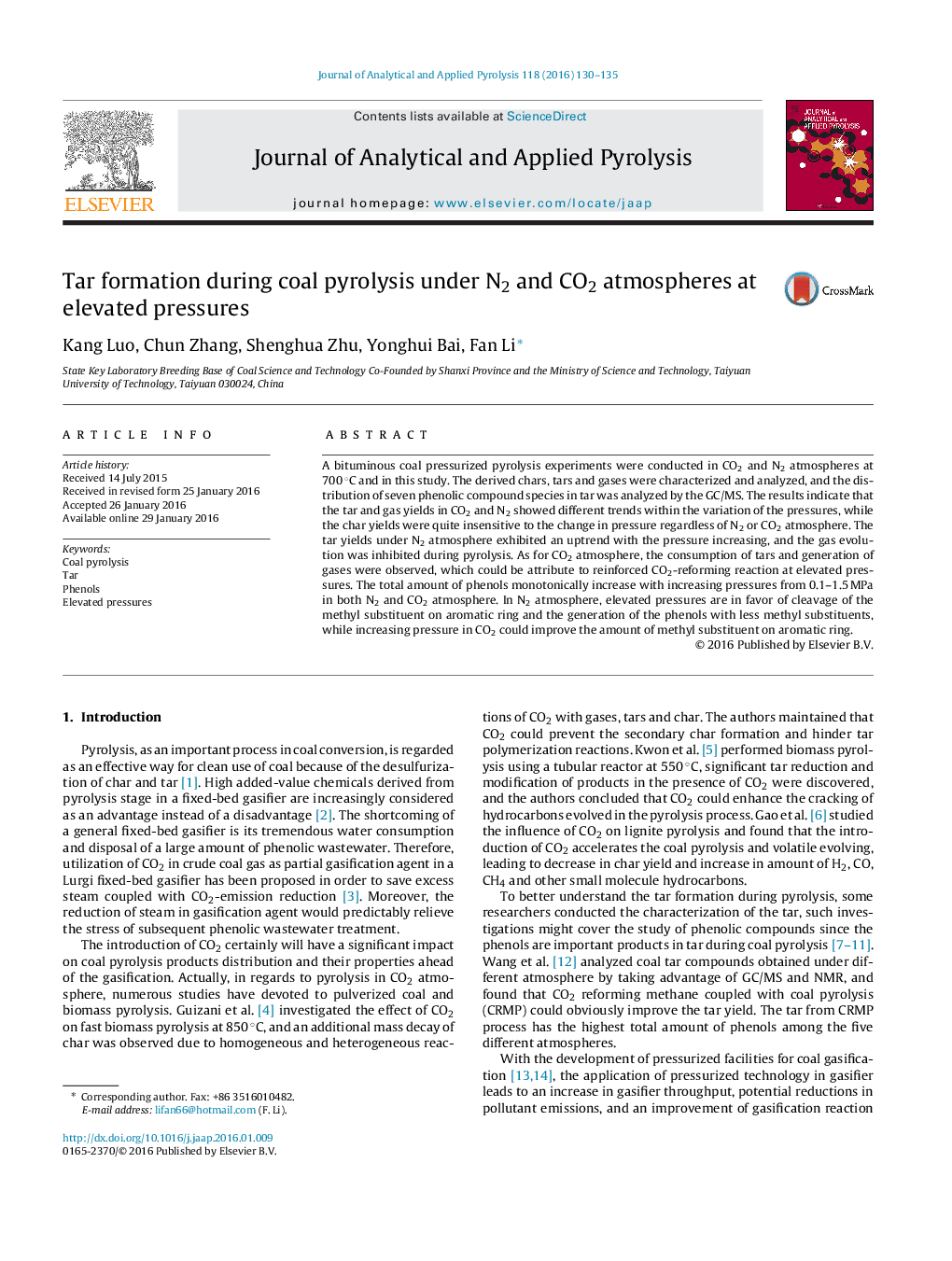| Article ID | Journal | Published Year | Pages | File Type |
|---|---|---|---|---|
| 1198255 | Journal of Analytical and Applied Pyrolysis | 2016 | 6 Pages |
•The principles of tar formation in CO2 and N2 atmospheres at elevated pressures were discussed.•Increasing pressure in CO2 atmosphere leads to the intensive CO2–tar reforming reaction.•Pyrolysis in N2 at elevated pressures are in favor of cleavage of the methyl substituent on aromatic ring.•Elevated pressures in CO2 accelerate the methyl substitution reaction on aromatic ring.
A bituminous coal pressurized pyrolysis experiments were conducted in CO2 and N2 atmospheres at 700 °C and in this study. The derived chars, tars and gases were characterized and analyzed, and the distribution of seven phenolic compound species in tar was analyzed by the GC/MS. The results indicate that the tar and gas yields in CO2 and N2 showed different trends within the variation of the pressures, while the char yields were quite insensitive to the change in pressure regardless of N2 or CO2 atmosphere. The tar yields under N2 atmosphere exhibited an uptrend with the pressure increasing, and the gas evolution was inhibited during pyrolysis. As for CO2 atmosphere, the consumption of tars and generation of gases were observed, which could be attribute to reinforced CO2-reforming reaction at elevated pressures. The total amount of phenols monotonically increase with increasing pressures from 0.1–1.5 MPa in both N2 and CO2 atmosphere. In N2 atmosphere, elevated pressures are in favor of cleavage of the methyl substituent on aromatic ring and the generation of the phenols with less methyl substituents, while increasing pressure in CO2 could improve the amount of methyl substituent on aromatic ring.
